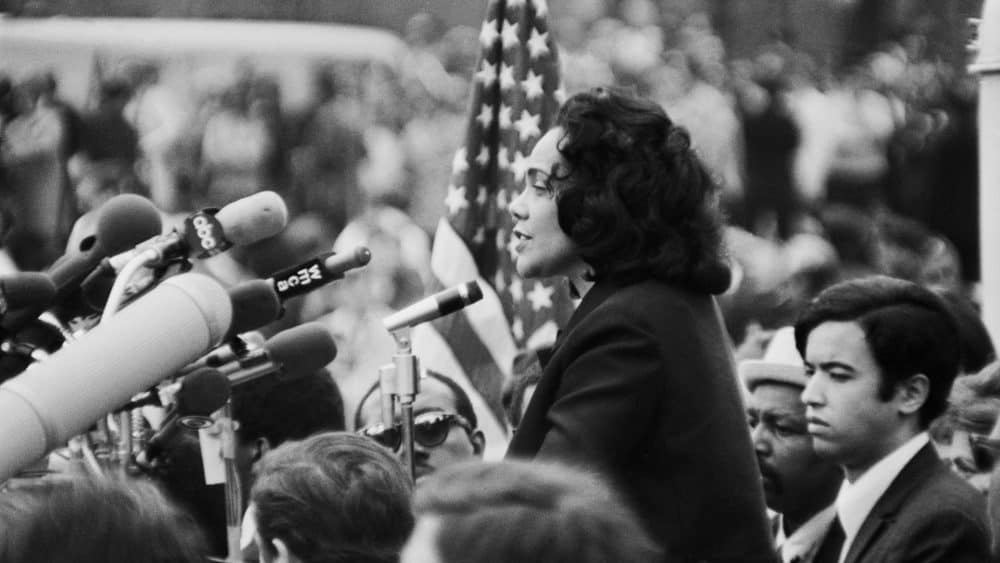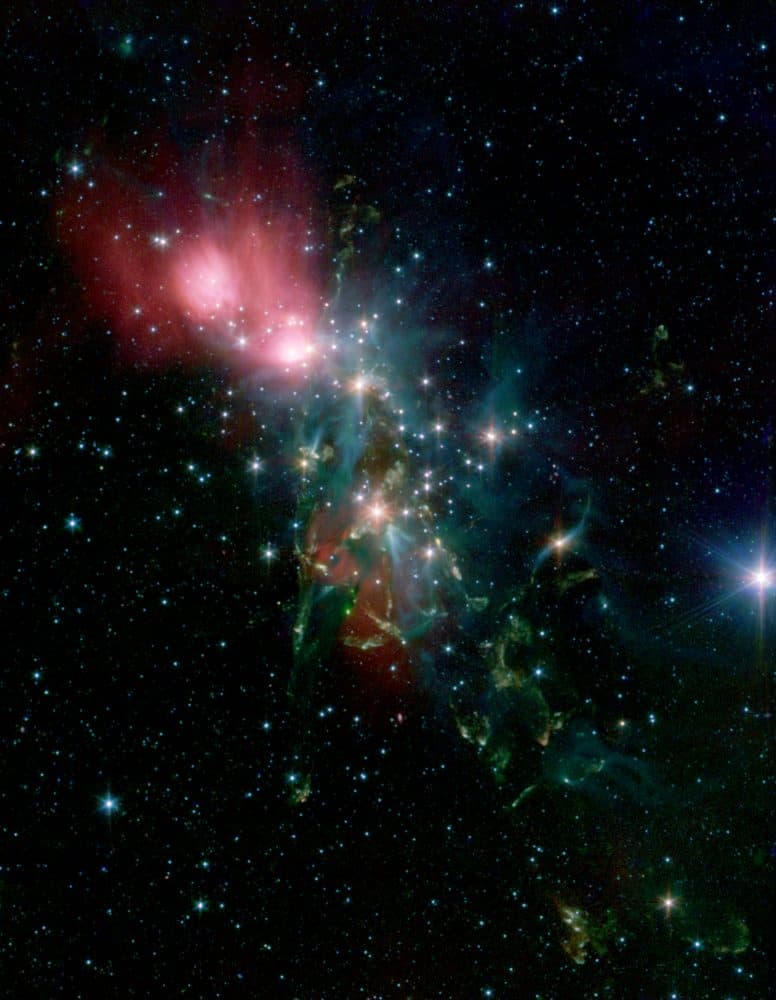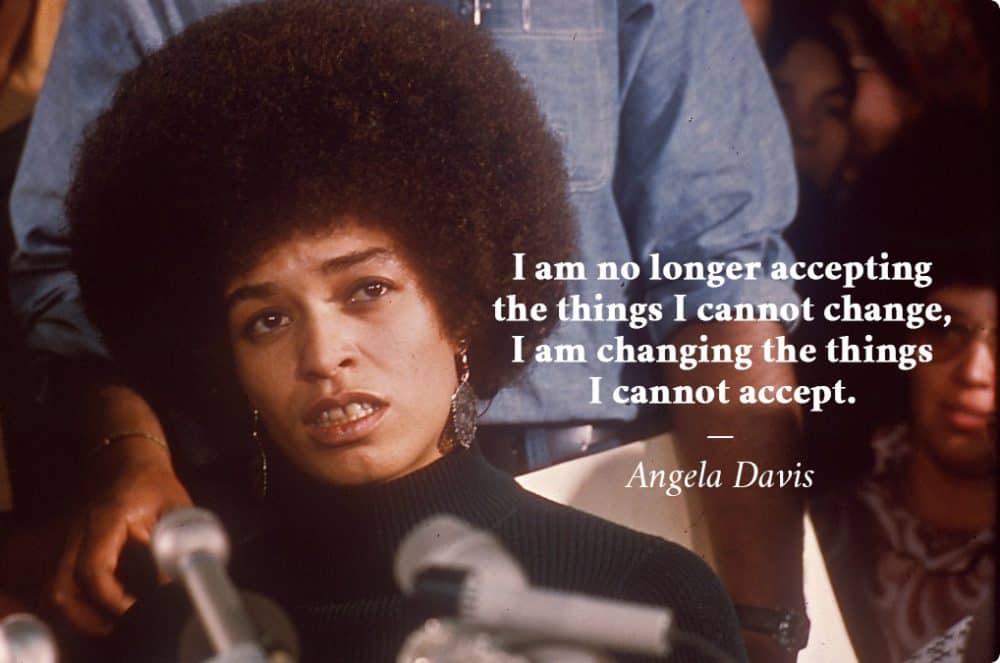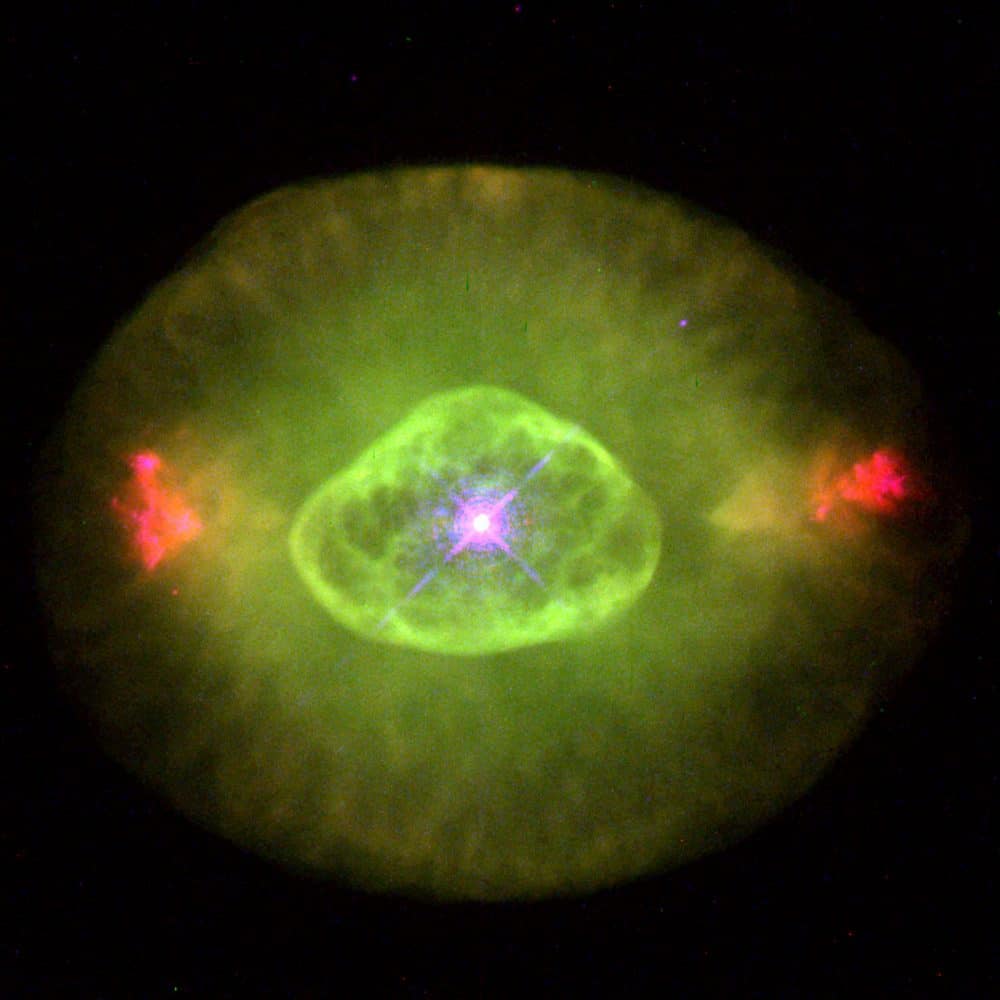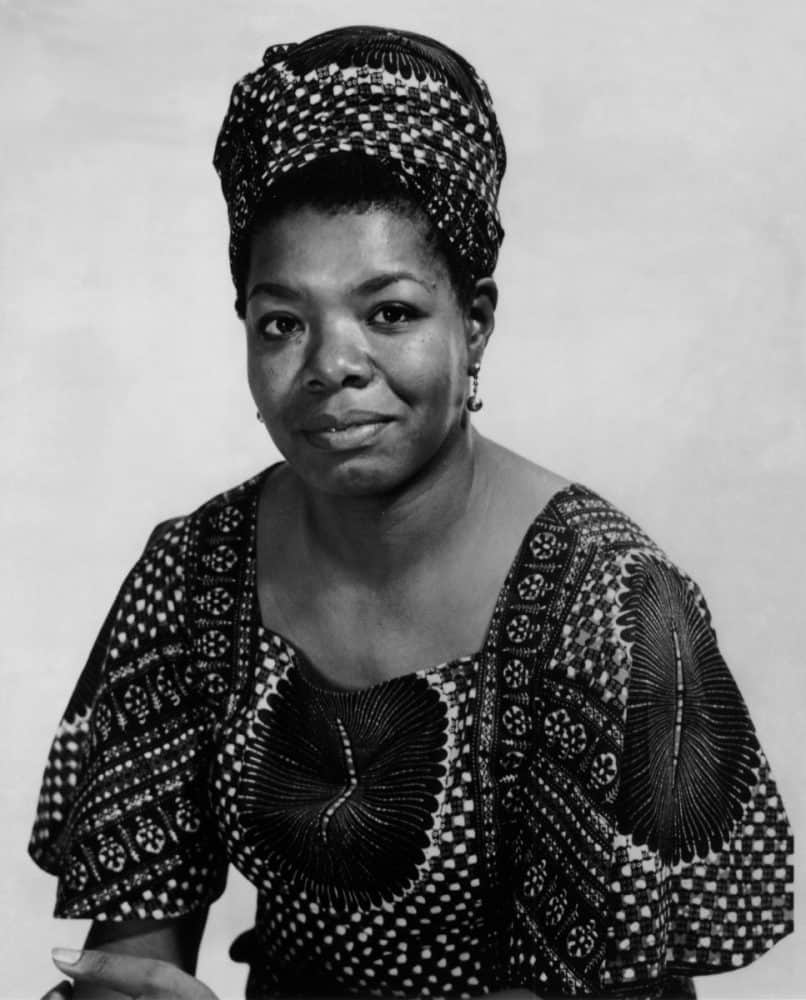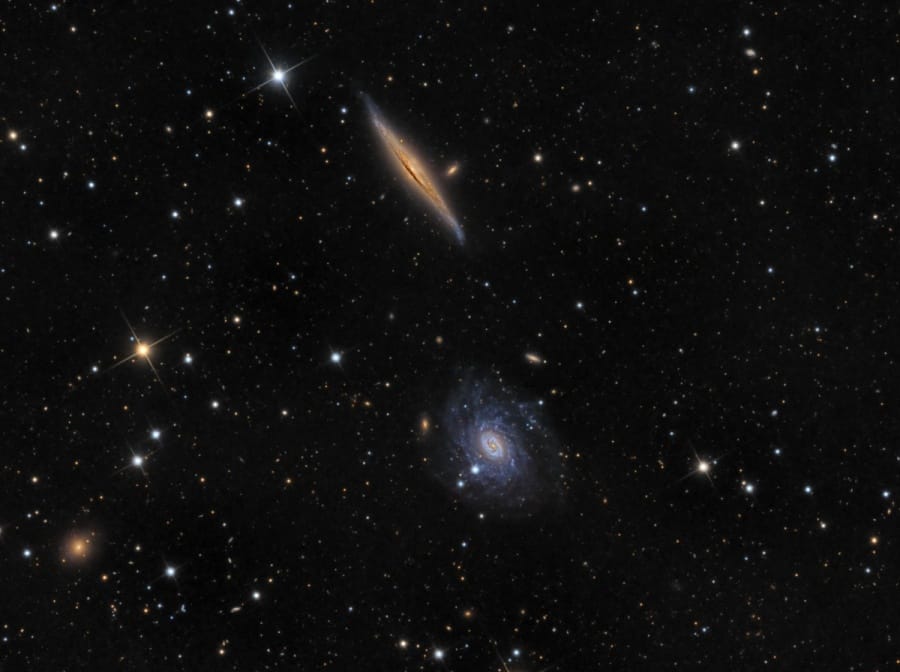Blog
“Freedom and justice cannot be parceled out in pieces to suit political convenience. I don’t believe you can stand for freedom for one group of people and deny it to others.” Coretta Scott King
more...
Dusty NGC 1333 is seen as a reflection nebula in visible light images, sporting bluish hues characteristic of starlight reflected by dust. But at longer infrared wavelengths, the interstellar dust itself glows – shown in red in this false-color Spitzer Space Telescope image. The penetrating infrared view also shows youthful stars that would otherwise still be obscured by the dusty clouds which formed them. Notably, greenish streaks and splotches that seem to litter the region trace the glow of cosmic jets blasting away from emerging young stellar objects as the jets plow into the cold cloud material. In all, the chaotic scene likely resembles one in which our own Sun formed over 4.5 billion years ago. NGC 1333 is a mere 1,000 light-years distant in the constellation Perseus.
more...Robert Hutcherson (January 27, 1941 – August 15, 2016) was an American jazz vibraphone and marimba player. “Little B’s Poem”, from the 1966 Blue Note album Components, is one of his best-known compositions. Hutcherson influenced younger vibraphonists including Steve Nelson, Joe Locke, and Stefon Harris.
Robert Calvin Bland (né Robert Calvin Brooks; January 27, 1930 – June 23, 2013), known professionally as Bobby “Blue” Bland, was an American blues singer.
Bland developed a sound that mixed gospel with the blues and R&B. He was described as “among the great storytellers of blues and soul music… [who] created tempestuous arias of love, betrayal and resignation, set against roiling, dramatic orchestrations, and left the listener drained but awed.”He was sometimes referred to as the “Lion of the Blues” and as the “Sinatra of the Blues”.His music was also influenced by Nat King Cole.
Bland was inducted into the Blues Hall of Fame in 1981, the Rock and Roll Hall of Fame in 1992, and the Memphis Music Hall of Fame in 2012. He received the Grammy Lifetime Achievement Award in 1997. The Rock and Roll Hall of Fame described him as “second in stature only to B.B. King as a product of Memphis‘s Beale Street blues scene”.
Bland was born Robert Calvin Brooks in the small town of Barretville, Tennessee
more...Elmore James (January 27, 1918 – May 24, 1963) was an American blues guitarist, singer, songwriter and bandleader. He was known as “King of the Slide Guitar” and was noted for his use of loud amplification and his stirring voice.
James was born Elmore Brooks in Richland, Holmes County, Mississippi, the illegitimate son of 15-year-old Leola Brooks, a field hand. His father was probably Joe Willie “Frost” James, who moved in with Leola, and Elmore took his surname. He began making music at the age of 12, using a simple one-string instrument (diddley bow, or jitterbug) strung on a shack wall. As a teen he performed at dances under the names Cleanhead and Joe Willie James. He married Minnie Mae about 1942. He subsequently married at least twice more.
James was strongly influenced by Robert Johnson, Kokomo Arnold and Tampa Red. He recorded several of Tampa Red’s songs. He also inherited from Tampa Red’s band two musicians who joined his own backing band, the Broomdusters, “Little” Johnny Jones (piano) and Odie Payne (drums). There is a dispute about whether Johnson or James wrote James’s signature song, “Dust My Broom”
https://www.youtube.com/watch?v=LqfcY11UGW4
more...NGC 6826 (also known as Caldwell 15) is a planetary nebula located in the constellation Cygnus. It is commonly referred to as the “blinking planetary”, although many other nebulae exhibit such “blinking”. When viewed through a small telescope, the brightness of the central star overwhelms the eye when viewed directly, obscuring the surrounding nebula. However, it can be viewed well using averted vision, which causes it to “blink” in and out of view as the observer’s eye wanders.
A distinctive feature of this nebula are the two bright patches on either side, which are known as Fast Low-Ionization Emission Regions, or FLIERS. They appear to be relatively young, moving outwards at supersonic speeds.
2000 ly
more...Anita Denise Baker (born January 26, 1958) is an American singer-songwriter. Starting her career in the late 1970s with the funk band Chapter 8, Baker released her first solo album, The Songstress, in 1983. In 1986, she rose to stardom following the release of her platinum-selling second album, Rapture, which included the Grammy-winning single “Sweet Love“. She is regarded as one of the most popular singers of soulful romantic ballads during the height of the quiet storm period of contemporary R&B in the 1980s. As of 2017, Baker has won eight Grammy Awards and has five platinum albums and one gold album. Her vocal range is contralto.
Anita Baker was born on January 26, 1958 in Toledo, Ohio. When she was two, her mother abandoned her and Baker was raised by a foster family in Detroit, Michigan. When Baker was 12, her foster parents died and her foster sister raised her afterwards. By the time Baker was 16, she began singing R&B at Detroit nightclubs. After one performance, she was discovered by bandleader David Washington, who gave her a card to audition for the funk band, Chapter 8.
https://www.youtube.com/watch?v=TEtAx1n2jbQ
more...Huey Pierce Smith, known as Huey “Piano” Smith (born January 26, 1934, New Orleans, Louisiana), is an American rhythm-and-blues pianist whose sound was influential in the development of rock and roll.
His piano playing incorporated the boogie styles of Pete Johnson, Meade Lux Lewis, and Albert Ammons, the jazz style of Jelly Roll Morton and the rhythm-and-blues style of Fats Domino.AllMusic journalist Steve Huey noted that “At the peak of his game, Smith epitomized New Orleans R&B at its most infectious and rollicking, as showcased on his classic signature tune, ‘Don’t You Just Know It.'”
Smith was born in the Central City neighborhood of New Orleans. He was influenced by the innovative work of Professor Longhair. He became known for his shuffling right-handed break on the piano that influenced other Southern players.
Smith wrote his first song on the piano, “Robertson Street Boogie” (named after the street where he lived), when he was eight years old. He performed the tune with a friend; they billed themselves as Slick and Dark. Smith attended McDowell High School and Xavier University of Louisiana in New Orleans.
When Smith was fifteen, he began working in clubs and recording with his flamboyant partner, Eddie Jones, who rose to fame as Guitar Slim. When Smith was eighteen, in 1952, he signed a recording contract with Savoy Records, which released his first known single, “You Made Me Cry”. In 1953 Smith recorded with Earl King.
In 1955, Smith became the piano player with Little Richard‘s first band in sessions for Specialty Records. The same year he also played piano on several studio sessions for other artists, such as Lloyd Price. Two of the sessions resulted in hits for Earl King (“Those Lonely Lonely Nights”) and Smiley Lewis (“I Hear You Knocking“).
more...Clement Seymour “Sir Coxsone” Dodd CD (26 January 1932 – 5 May 2004) was a Jamaican record producer who was influential in the development of ska and reggae in the 1950s, 1960s and beyond.
He was nicknamed “Coxsone” at school due to his talent as a cricketer (his friends compared him to Alec Coxon, a member of the 1940s Yorkshire County Cricket Club team). The Kingston-born Dodd used to play records to the customers in his parents’ shop. During a spell in the American South he became familiar with the rhythm and blues music popular there at the time. In 1954, back in Jamaica, he set up the Downbeat Sound System, being the owner of an amplifier, a turntable, and some US records, which he would import from New Orleansand Miami.
Stéphane Grappelli (French pronunciation: [stefan ɡʁapɛli]; 26 January 1908 – 1 December 1997) was a French jazz violinist who founded the Quintette du Hot Club de France with guitarist Django Reinhardt in 1934. It was one of the first all-string jazz bands. He has been called “the grandfather of jazz violinists” and continued playing concerts around the world well into his 80s.
For the first three decades of his career, he was billed using a gallicised spelling of his last name, Grappelly, reverting to Grappelli in 1969. The latter, Italian spelling, is now used almost universally when referring to the violinist, including reissues of his early work.
Grappelli was born at Hôpital Lariboisière in Paris, France, and christened with the name Stéfano. His father, an Italian Marchese, Ernesto Grappelli, was born in Alatri, Lazio, and his French mother, Anna Emilie Hanoque, was from St-Omer. His father was a scholar who taught Italian, sold translations, and wrote articles for local journals. His mother died when he was five, leaving his father to care for him.
more...“You only are free when you realize you belong no place — you belong every place — no place at all.”
more...These two spiral galaxies make a photogenic pair, found within the boundaries of the northern constellation Draco. Contrasting in color and orientation, NGC 5965 is nearly edge-on to our line of sight and dominated by yellow hues, while bluish NGC 5963 is closer to face-on. Of course, even in this well-framed cosmic snapshot the scene is invaded by other galaxies, including small elliptical NGC 5969 at the lower left. Brighter, spiky stars in our own Milky Way are scattered through the foreground. Though they seem to be close and of similar size, galaxies NGC 5965 and NGC 5963 are far apart and unrelated, by chance appearing close on the sky. NGC 5965 is about 150 million light-years distant and over 200,000 light-years across. Much smaller, NGC 5963 is a mere 40 million light-years away and so is not associated with the edge-on spiral. Difficult to follow, NGC 5963’s extraordinarily faint blue spiral arms mark it as a low surface brightness galaxy.
more...Benny Golson (born January 25, 1929) is an American bebop/hard bop jazz tenor saxophonist, composer, and arranger. He came to prominence with the big bands of Lionel Hamptonand Dizzy Gillespie, more as a writer than a performer, before launching his solo career. Golson is known for co-founding and co-leading The Jazztet with trumpeter Art Farmer in 1959. From the late 1960s through the 1970s Golson was in demand as an arranger for film and television and thus was less active as a performer, but he and Farmer reformed the Jazztet in 1982. Several of Golson’s songs have become jazz standards, including “Blues March“, “Whisper Not“, “I Remember Clifford“, and “Killer Joe”.
While in high school in Philadelphia, Golson played with several other promising young musicians, including John Coltrane, Red Garland, Jimmy Heath, Percy Heath, Philly Joe Jones, and Red Rodney. After graduating from Howard University, Golson joined Bull Moose Jackson‘s rhythm and blues band; Tadd Dameron, whom Golson came to consider the most important influence on his writing, was Jackson’s pianist at the time.
From 1953 to 1959 Golson played with Dameron’s band and then with the bands of Lionel Hampton, Johnny Hodges, Earl Bostic, Dizzy Gillespie, and Art Blakey and the Jazz Messengerswith whom he recorded the classic Moanin’ in 1958.
Golson was working with the Lionel Hampton band at the Apollo Theater in Harlem in 1956 when he learned that Clifford Brown, a noted and well-liked jazz trumpeter who had done a stint with him in Dameron’s band, had died in a car accident. Golson was so moved by the event that he composed the threnody “I Remember Clifford“, as a tribute to a fellow musician and friend.
more...More Posts
- Ahmed Abdul-Malik Day
- Roy Eldridge Day
- World Music with Cicha & Pałyga
- Daily Roots with Cool Sticky
- Echos of Freedom by Barack Obama
- The Cosmos with Simeis 57
- Franco Cerri Day
- James Jamerson Day
- Eddie Taylor Day
- World Music with Adel Salameh
- Daily Roots with the Dynamites
- Echos of Freedom with Malcom X
- The Cosmos with D100
- Sarah McLachlan Day
- Bill Ware Day
- Baby Tate Day
- World Music with Pt. Dhruv Nath Mishra
- Daily Roots with Errol Walker
- Echos of Freedom by Coretta Scott King
- The Cosmos with NGC 1333
